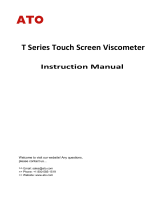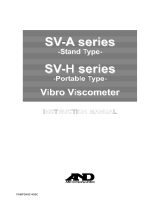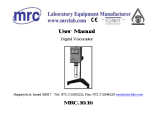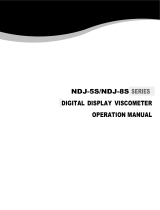Cannon TE-DPV® Asphalt is an automated, thermoelectrically cooled rotational digital paddle viscometer for measuring the dynamic viscosity of non-homogenous materials such as emulsified asphalts, marine fuels, residual oils, slurries, and foods at temperatures of 25 °C, 40 °C, 50 °C, 80 °C, and 100 °C. The TE-DPV® provides an affordable and automated alternative to older, labor-intensive, and less precise methods.
Cannon TE-DPV® Asphalt is an automated, thermoelectrically cooled rotational digital paddle viscometer for measuring the dynamic viscosity of non-homogenous materials such as emulsified asphalts, marine fuels, residual oils, slurries, and foods at temperatures of 25 °C, 40 °C, 50 °C, 80 °C, and 100 °C. The TE-DPV® provides an affordable and automated alternative to older, labor-intensive, and less precise methods.




















-
 1
1
-
 2
2
-
 3
3
-
 4
4
-
 5
5
-
 6
6
-
 7
7
-
 8
8
-
 9
9
-
 10
10
-
 11
11
-
 12
12
-
 13
13
-
 14
14
-
 15
15
-
 16
16
-
 17
17
-
 18
18
-
 19
19
-
 20
20
-
 21
21
-
 22
22
-
 23
23
-
 24
24
-
 25
25
-
 26
26
Cannon TE-DPV® Asphalt Owner's manual
- Type
- Owner's manual
- This manual is also suitable for
Cannon TE-DPV® Asphalt is an automated, thermoelectrically cooled rotational digital paddle viscometer for measuring the dynamic viscosity of non-homogenous materials such as emulsified asphalts, marine fuels, residual oils, slurries, and foods at temperatures of 25 °C, 40 °C, 50 °C, 80 °C, and 100 °C. The TE-DPV® provides an affordable and automated alternative to older, labor-intensive, and less precise methods.
Ask a question and I''ll find the answer in the document
Finding information in a document is now easier with AI
Related papers
-
Cannon PulpVIS® Owner's manual
-
Cannon miniQV-X 1 Bath 115V 50/60 HZ Installation guide
-
Cannon DPV® ASPHALT (115V) Owner's manual
-
Cannon CT-524 User manual
-
Cannon TE-3000 (100 V) Owner's manual
-
Cannon CT-600 (120 V) Owner's manual
-
Cannon DVR-1500 HORIZONTAL (240 V) Owner's manual
-
Cannon TE-1500 LOW TEMP BATH 100V/60H Owner's manual
-
Cannon miniAV-X 1 Bath 115V 50/60 HZ Installation guide
-
Cannon miniAV-X 1 Bath 115V 50/60 HZ Installation guide
Other documents
-
 MRC VIS-8 User manual
MRC VIS-8 User manual
-
A&D SV-100 User manual
-
Brookfield CAP 1000+ Operating Instructions Manual
-
Omega HMG-11, 12, and HMG-13 Series Owner's manual
-
 ATO NDJ-8T User manual
ATO NDJ-8T User manual
-
 AND SV-A / SV-H Series User manual
AND SV-A / SV-H Series User manual
-
Omega RVB-2 Owner's manual
-
Brookfield DV-II+ Operating Instructions Manual
-
 MRC VIS-9 User manual
MRC VIS-9 User manual
-
 AMTAST NDJ-8S User manual
AMTAST NDJ-8S User manual






























